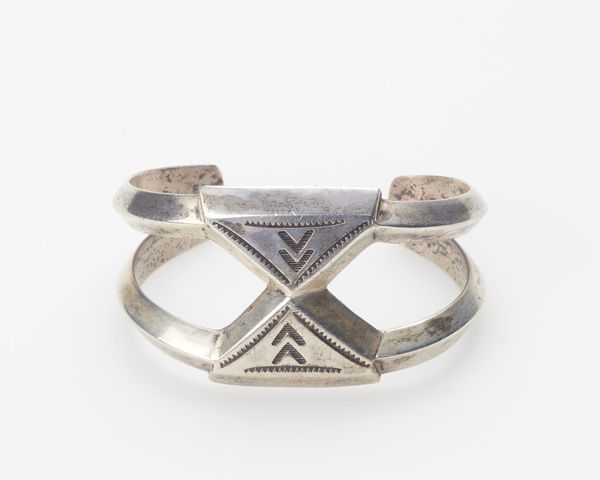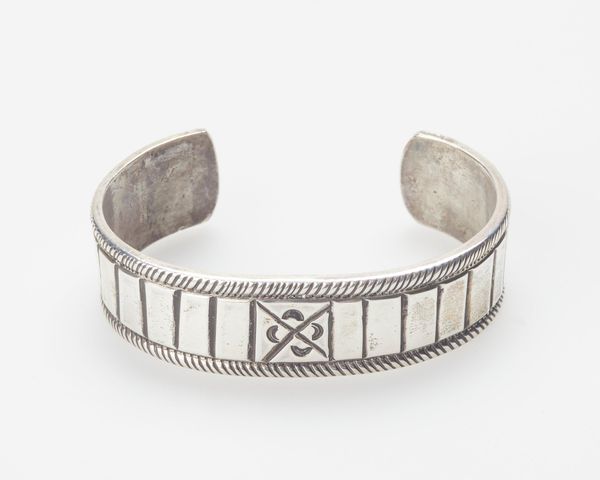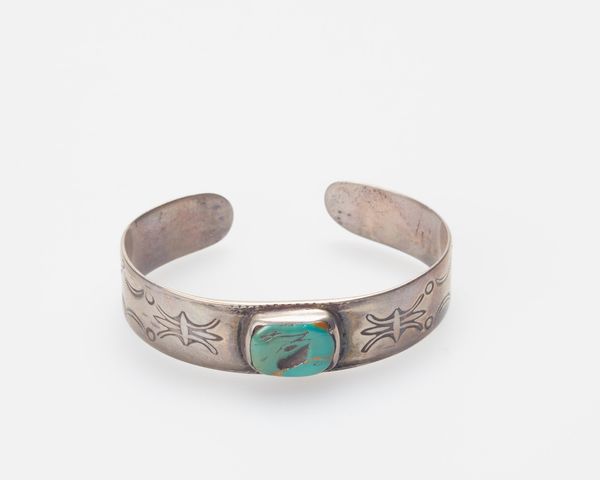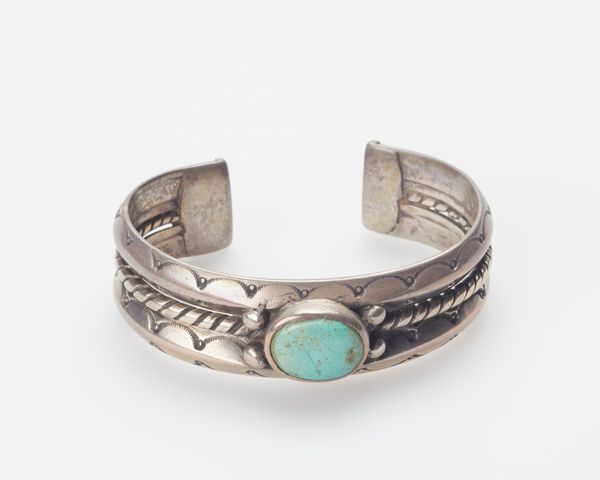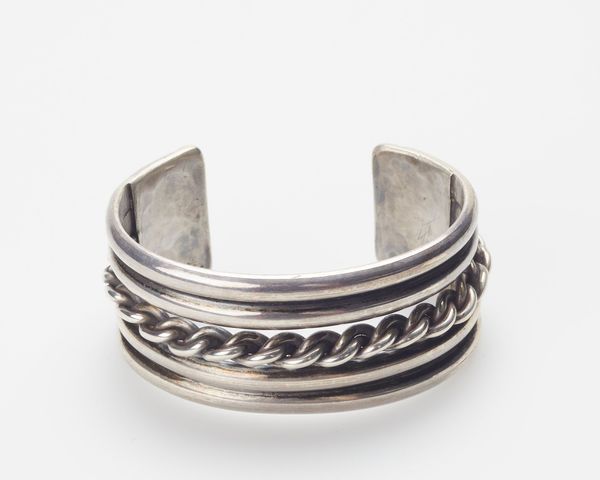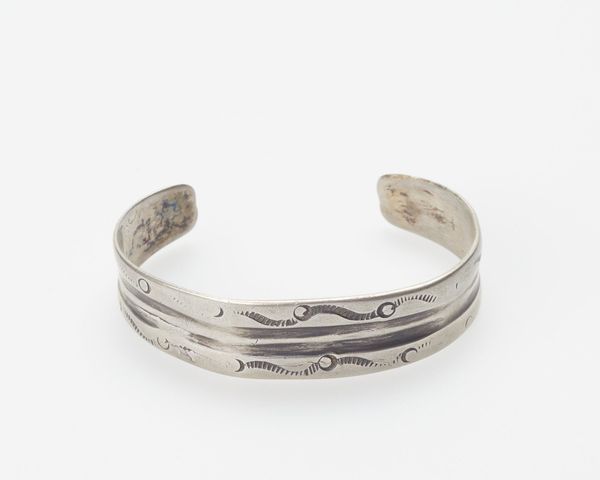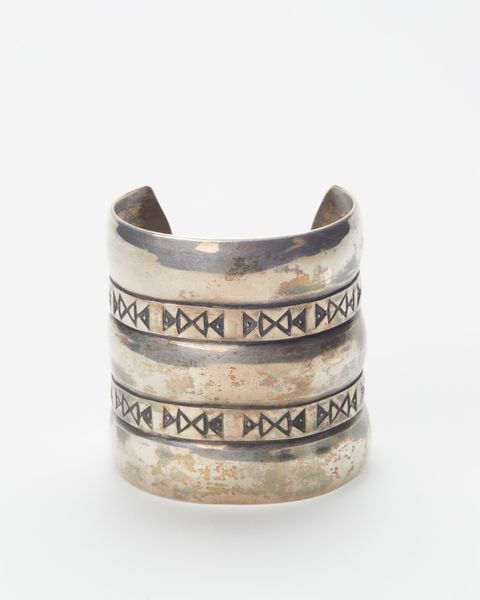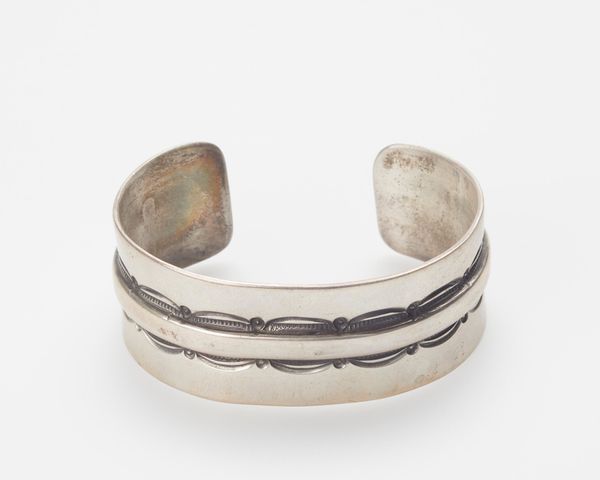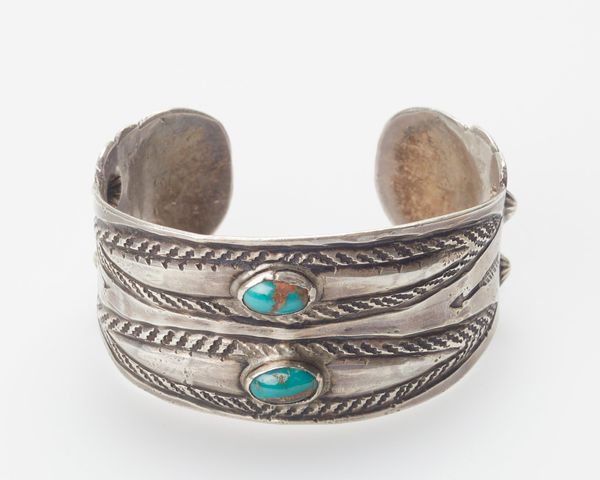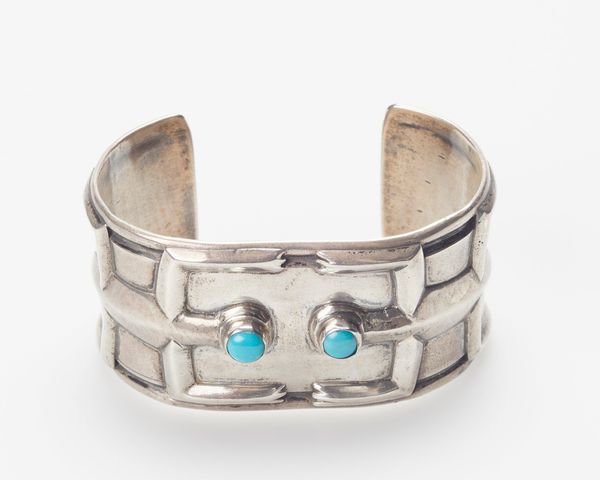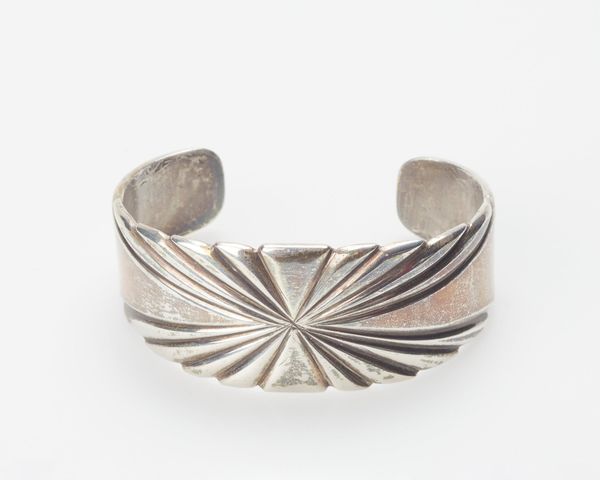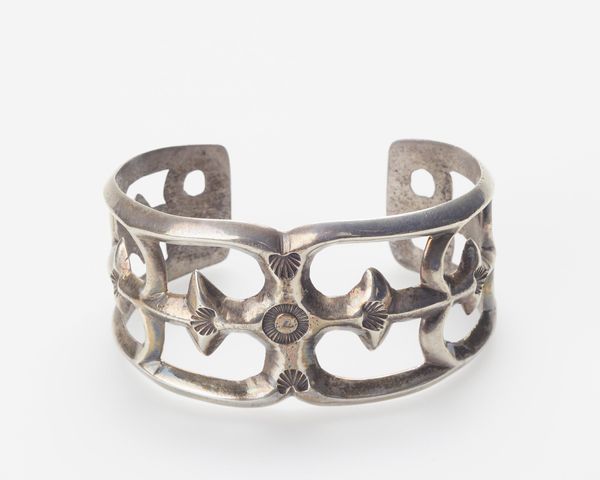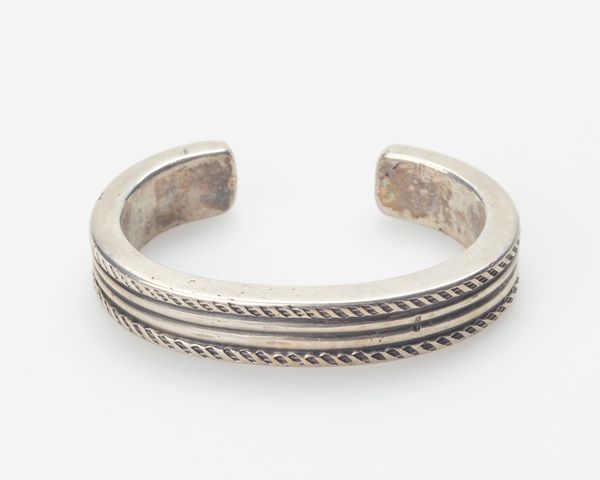
silver, metal
#
silver
#
metal
#
geometric
#
indigenous-americas
Dimensions: 2 9/16 x 1 1/2 x 1 1/2 in. (6.51 x 3.81 x 3.81 cm)
Copyright: Public Domain
Curator: This is a Navajo silver bracelet, likely dating from the 1960s, held in the collection of the Minneapolis Institute of Art. Editor: My first impression is that it feels both grounded and evocative of movement; the silver is solid, almost weighty, yet the etched designs suggest a turning or flowing energy. Curator: Exactly. This type of bracelet became particularly popular during that mid-century period. Its production reflects both artistic tradition and adaptation to the market economy, intertwining cultural expression with economic realities. What do you make of the central motif, the stylized flower? Editor: I think we should resist any essentialist ideas about Indigenous symbolism; instead, the meaning of the floral symbol is plural, inflected through local iteration, use and wearer. This wasn't made in a vacuum; such jewelry served to generate capital and community amidst intense pressure of ongoing colonization. This is where jewelry crosses the threshold of aesthetic achievement to become cultural performance and testimonial. Curator: And this geometric sensibility, simplified but powerful, does tie into larger social themes about land, identity and resistance during this period of rapid social change, the mid-20th century. What strikes me is the accessibility. It's beautiful, yes, but also designed for wear, for daily life. How does that impact your sense of the piece? Editor: It makes me think of the wearer—likely a Navajo woman. How she understood adornment and aesthetics under cultural duress becomes critical. Where was this purchased? Was it bought in solidarity, as so much indigenous design became sought-after for the burgeoning American left during the period, or more often by the casual tourist as part of an exoticising vacation. In short, the afterlives of this work remain charged, speaking volumes about cultural transmission as well as the commodification of native forms and customs. Curator: Absolutely. That market and how it operated politically deserves intense investigation. It shifts how we interpret this decorative art into a living, contested part of public culture, wouldn't you agree? Editor: Without a doubt. Curator: I'll certainly be viewing this and related silverwork differently now, considering the agency of its design against this broader historical canvas.
Comments
No comments
Be the first to comment and join the conversation on the ultimate creative platform.
